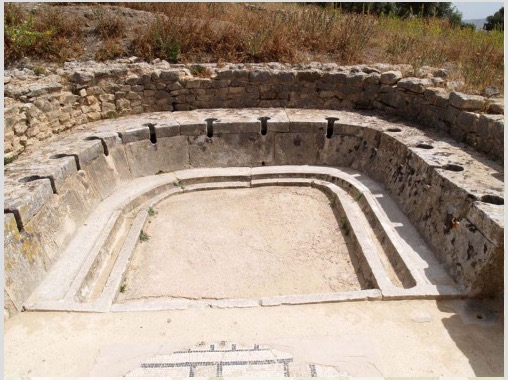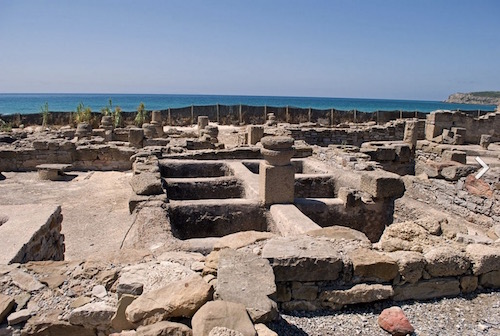“All right, but apart from the sanitation, medicine, education, wine, public order, irrigation, roads, the fresh water system and public health, what have the Romans ever done for us?” from Monty Python’s Life of Brian
When they conquered large parts of Europa and the Mediterranean in the 1st-3rd centuries AD, the Romans brought a lot of good things, such as literature, arts, paved roads, and sanitation. The Romans were masters of engineering who built elaborate houses with atriums and heated floors, sewer systems, aqueducts, bathhouses with pools of different temperatures, and flushing toilets. In ancient Roman cities, it was very normal to go to a public bathroom for a #2. Those bathrooms consisted of long slabs of stone with holes for everyone to sit on, with flowing water underneath. After you were done, you could wipe your butt with a wet sponge-on-a stick. Read more about those fascinating bathrooms on this excellent blog post: Roman Bathroom Habits – Ancient Peoples, which also features this picture:

With these sophisticated hygienic conditions, you might think that Romans were not often plagued by diseases such as intestinal parasites, or that the Romanization of Europe might have led to a decrease in parasitic infections . However, a recent review by Piers Mitchell from the University of Cambridge in Parasitology, shows that Romans and cultures living under Roman Rule suffered a lot of worms, Entamoeba, and other unpleasant guests in their guts.
In this fascinating review, Mitchell first explains how to study ancient parasites (“palaeoparasitology”). Archeological poop remnants can be found in the soil surrounding old latrines. Well-preserved, fossilized stool samples are called “coprolites“, from the Greek word kopros meaning “dung”. Archeological parasites can be studied by a range of different techniques. Some helminth eggs have tough walls and can be preserved for thousands of years. Microscopy could be used to detect the eggs, but identification to the correct helminth species is often tough with these old samples. Genetic techniques (e.g., PCR), if carefully applied, might work on the less fragile eggs as well. ELISA is often effective for more fragile cysts, such as those from Entamoeba and Giardia species.
Mitchell reviews the literature of parasitic infections in European and Middle-East areas before the arrival of the Romans; intestinal parasites with tapeworms, flukes, roundworm, and whipworm were very common in the Neolithic, Bronze, and Iron Age. But when the Romans came to these areas, the prevalence of these parasites did not decrease. Fish tapeworm infections were even more common than in the Bronze and Iron Age, possibly because the Romans loved fermented uncooked fish sauce (“garum“). Mitchell explains that human feces was often used as crop fertilizer, thus enabling the spread of roundworms and whipworms.

Ectoparasites, such as lice, fleas, and bed bugs were also very common in the Roman world. Head lice and eggs have been recovered from at least 50 archaeological sites and wooden combs from that time period.
So even when bringing along all their hygienic bathhouses and sewer systems, the Romans did not change the rate and scope of parasitic infections much.
It’s a great read for everybody who is interested in history and parasitology.
Human parasites in the Roman World: health consequences of conquering an empire
Piers D. Mitchell – Parasitology
Update: Piers Mitchell also wrote this blog post about his review:
Why the Romans weren’t quite as clean as you might have thought
Piers Mitchell – The Conversation